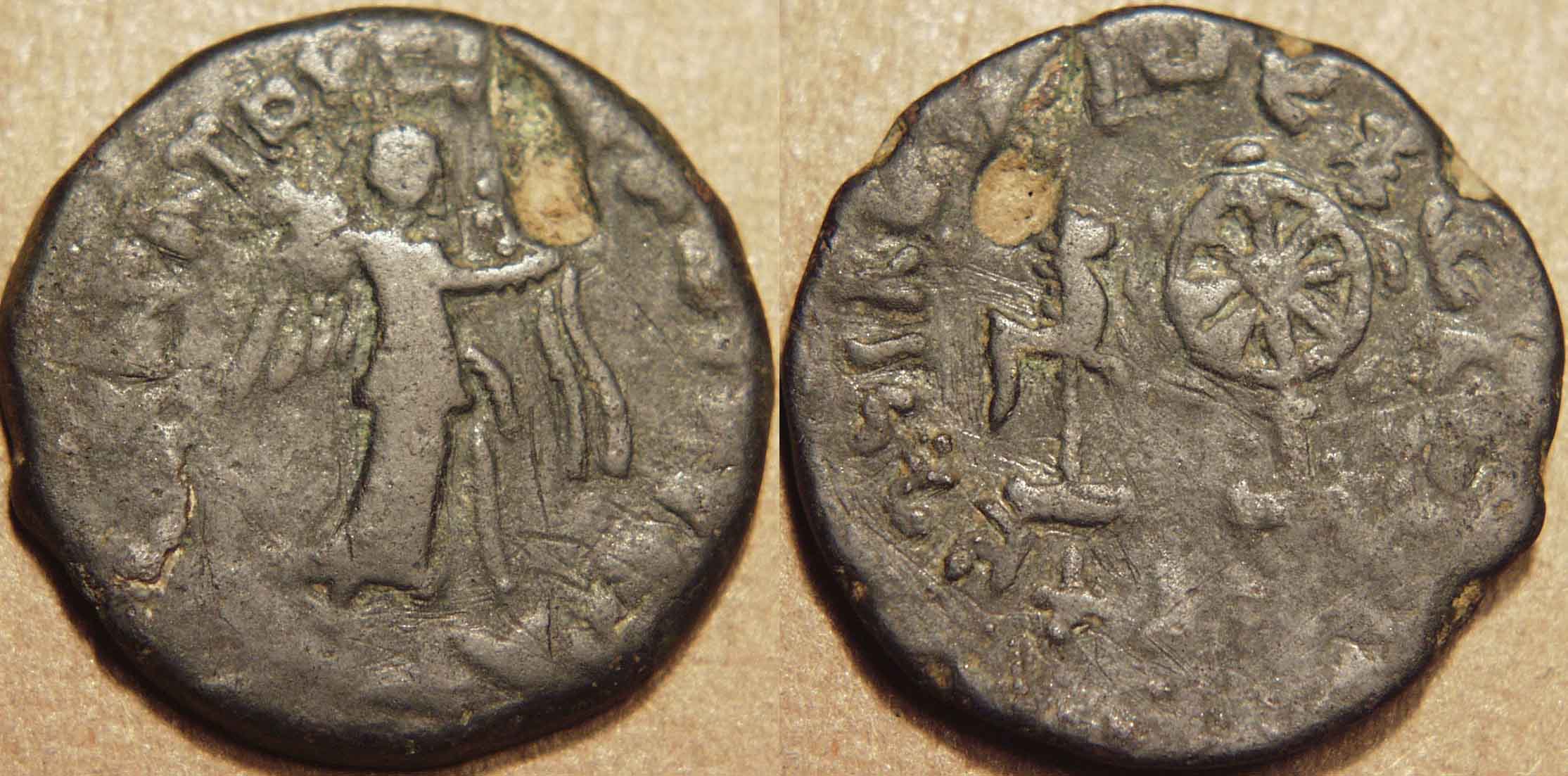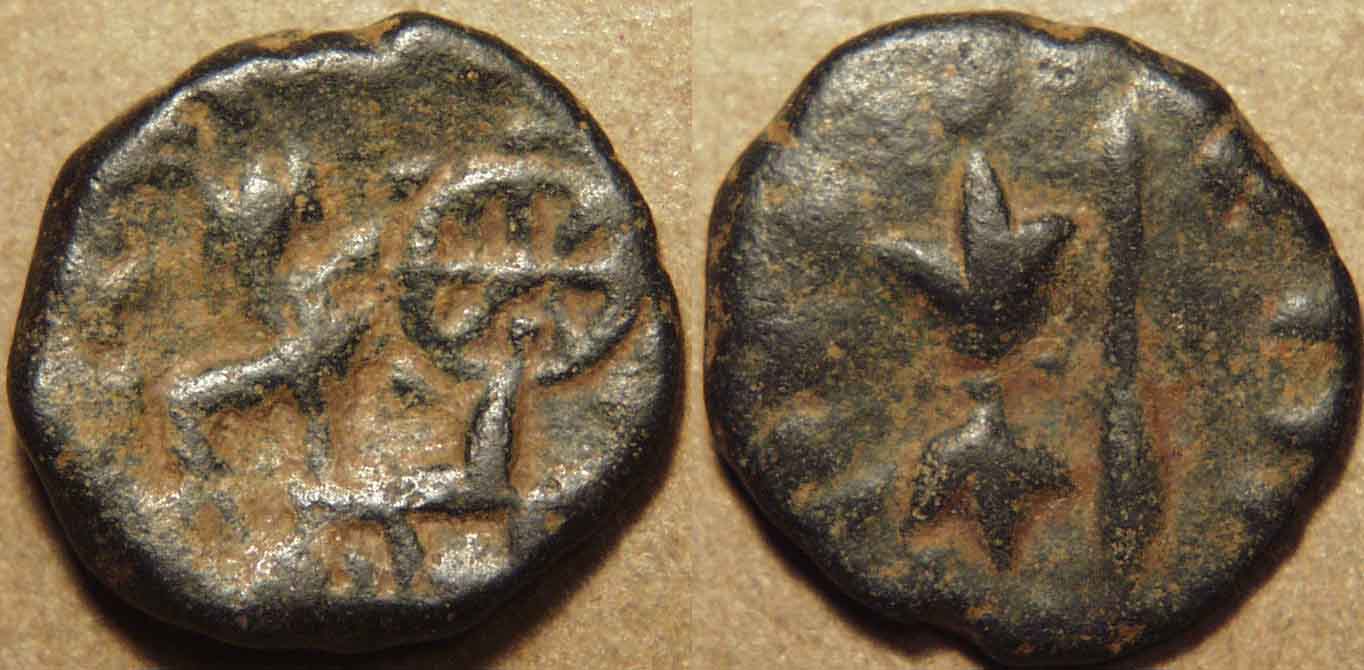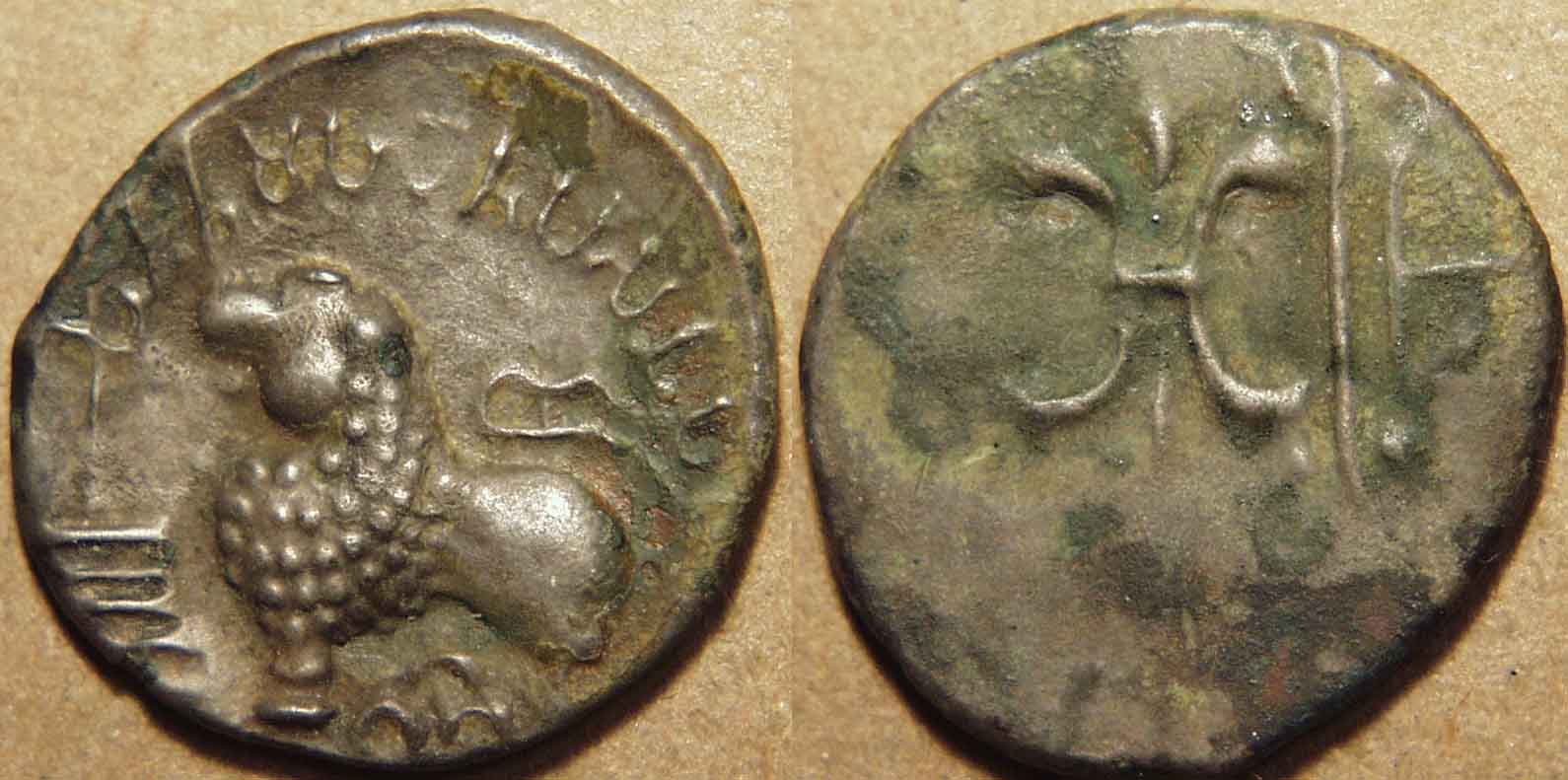
|
|
The Western Kshatrapas were probably a Scythian dynasty that ruled a large kingdom in western India
from the 1st to the early 5th century. This dynasty produced a remarkably consistent series of silver coins from the beginning to the end of their rule. The coins have two features
of great interest. First, they typically name the king (entitled kshatrapa or mahakshatrapa) and his father, thereby giving us information with which to establish a lineage.
Second, starting in the year 178 CE and continuing for over 200 years, they are dated (in the Saka era, which commenced in the year 78 of the common era), so they also
provide specific dates for each of the rulers in that period. This has been of importance not only in establishing a firm chronology for the Western Kshatrapas, but also for dating
many kings of other dynasties known from inscriptions to have been contemporaries of individual Kshatrapa rulers.
The Western Kshatrapas ruled a considerable kingdom, including parts of the modern states of Sind, Gujarat, Rajasthan, and Maharashtra, yet they called themselves
kshatrapas or satraps. Because the mightiest kingdom during the early period of the Western Kshatrapas was that of the Kushans, many authors have concluded
that the Western Kshatrapas must have been feudatories or governors of the Kushan king. However, there is not very much evidence to support this conclusion and it could
well be instead that the dynasty may have started out as a feudatory of a Scythian king such as Azes II, continued to call themselves kshatrapas after asserting their
independence as a way of establishing their legitimacy to rule, and stuck with the practice more or less as a habit long after the main Scythian power had dissipated.
The kings known as the Western Kshatrapas actually belonged to two families or dynasties. The first is known as the Kshaharatas, from the legends on their coins, and
consisted of just three kings (as far as we know). Their coins are presented here. Of these, Nahapana is the only one about whom we know something ... he is mentioned in the
Periplus of the Erythrean Sea, a first century travelog, and known from several inscriptions also. He expanded his empire at the expense of the Satavahanas, as
evidenced by his Junnar type coins modeled on Satavahana prototypes from the same region, but then was defeated by them, as there are many Nahapana coins overstruck by
the Satavahana king Gautamiputra Satakarni.
|
| The Kshaharatas |
Abhiraka ("Aghudaka") |

| Abhiraka, copper unit
c. early 1st century CE
Weight: 10.35 gm., Diam: 26 mm.
Winged Nike standing right, Greek legend around:
(@7h) CATAPATOY CATPAΠOY AYBIPAKOY /
Lion and dharmachakra on pedestals, Kharoshthi legend around:
(at 8h) Kaharatasa katarapasa jayatasa Abhirakasa |
 |
The name of this king had been thought to be Aghudaka until recently, when Robert Senior provided a correct reading.
|
 |
 |
 |
Bhumaka |

|
Bhumaka, copper unit
c. early 1st century CE
Weight: 3.73 gm., Diam: 18 mm.
Lion and dharmachakra on pedestals, Kharoshthi legend around /
Thunderbolt and spear, legend around |
 |
Nahapana |

|
Nahapana, silver drachm
c. middle of 1st century CE
Weight: 2.20 gm., Diam:17 mm.
Head of king right, blundered Greek legend around /
Arrow and thunderbolt, Brahmi and Kharoshthi legends around:
Brahmi @ 11:30 clockwise: Rajno Kshaharatasa Na(hapanasa)
Kharoshthi, at 11, anti-clockwise: Rajno Chaharatasa Nahapanasa
|

|
Nahapana, lead unit
c. middle of 1st century CE
Weight: 13.52 gm., Diam: 30 mm.
Lion standing left, railed plough before, Brahmi legend above:
Rajna Mahakhatapasa Nahapanasa
Tunderbolt, spear (?) and bow and arrow
|
 |
This coin and the next follow the Satavahana coins of Junnar, indicating that Nahapana had defeated the Satavahanas
and seized that area. |

|
Nahapana, potin unit
c. middle of 1st century CE
Weight: 3.68 gm., Diam: 21 mm.
Lion standing left, railed plough before, three-arched hill below, Brahmi legend above:
Rajna Mahakhatapasa Nahapanasa
Tunderbolt, spear (?) and bow and arrow
|
|
|